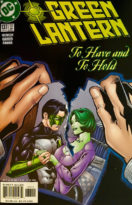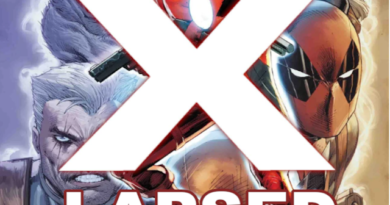Reggie and Me – The Kefauver Hearings, Day One
Before starting this project, I had never heard of an Estes Kefauver. When Reggie suggested we include the “Kefauver Hearings” into our research, I assumed “Kefauver” was some far off Eastern European city-state with a courthouse in it. Or maybe, it was a street in Washington, D.C. with a courthouse on it. I really had no clue. It’s here I want to remind you that shortly before we started this venture, I paid for a college course about American Literature with a focus on comic books. Kefauver never came up.
Like most folks, all I knew was the inch-deep, mile-wide on the Comics Code Authority: From out of nowhere came a Boogeyman, who wrote a book (that I hadn’t yet read)… bada-bing, bada-boom – the Code! That’s the easiest way to look at it… it’s also the laziest.
Here was our game plan for this episode:
With this third chapter, many of the building blocks of what the “Chris and Reggie Channel” would become were established… but, we’ll get there.
First, let’s take a look at Panic #1 (1953)… founded by Al Feldstein, and published under Bill Gaines’ (of EC Comics) Tiny Toy Imprint. Panic was in the vein of MAD, which had launched two years prior. It was unspectacular in many ways, however… it included this one story: a straight re-telling of The Night Before Christmas/A Visit From St. Nicholas, by Clement Moore.
This story featured some “visual embellishments” from Bill Elder… which sort of poked fun at the holiday, Santa, and many of the festive trappings. Christians and Catholics were displeased at the, what they felt to be, “desecration” of the holiday… and its depiction as Pagan in nature.
On December 18, 1953 – the Governor’s Council of Massachusetts called for a statewide ban on Panic #1. Less than two weeks later on December 28, employees at EC Comics were arrested (presumably on indecency charges). The charges would not stick… but, I’m sure the raid ruined their day.
Used to be, around Christmastime on social media… I’d see the cover of Panic #1 getting shared around. I’d make a comment regarding how it was banned in Massachusetts… or how it was vital in the establishment of the Comics Code Authority. I’d usually be “corrected”/”educated” by whoever posted it… and referred back to Seduction of the Innocent. I’ve since given up trying.
Next, let’s meet Senator Estes Kefauver (D-TN). He was something of a shining star in the Democratic party… and was fresh off a failed bid for the Democractic Presidential nomination. He actually managed to beat sitting President Harry S. Truman in the New Hampshire Primary in 1952!
Truman ultimately wound up withdrawing, as this would have been his third term in office. The 22nd Amendment to the Constitution was still new at this point, and Harry would have been able to claim “grandfather clause” to run a third time.
Kefauver would win the bigger states in the primary, including New York, California, and Illinois… and yet, somehow lost the overall nod to Adlai Stevenson (I don’t talk current-year politics, but you might compare this to something that happened during the 2016 Democratic Primaries). Stevenson would lose his bid against Ike. Two years after the Hearings we’re about to discuss, Kefauver once again threw his hat in the ring… and fell short to Stevenson. This time, however, Adlai chose Estes as his running mate. Together, the lost to Ike.
So, Estes Kefauver was a “name”… it was just a name I’d never heard of! Before getting into American politics, Estes graduated from Yale Law School… and would practice law in Chattanooga, Tennessee for over a decade. Now, among Estes’ main concerns was… taking down organized crime. Come to find… many organized crime “families” had printing “interests”… and, one might have had some nebulous (or maybe not-so-nebulous) connection to DC Comics/National Comics founders Harry Donenfeld and Jack Liebowitz.
Reggie and I, from very early on in our partnership, always had our eyes on putting together a book. The founding of DC/National… and the stories of Donenfeld and Liebowitz was at the top of our list. I still have a folder full of Donenfeld information… including some bits and bobs from his FBI file. That was going to be a wild ride.
Back to Kefauver. He became something of a national celebrity for taking part in the first-ever televised trial: the Frank Costello case. Frank Costello, by the way, is who Orson Welles’ speaking pattern in The Godfather was inspired by.
The trial began in May, 1951… and would go on for several months. It was aired live throughout twenty cities… causing sales of television sets to double. It was estimated to have been viewed by 20-30 million Americans. As part of a deal made with the Defense, Costello’s attorney insisted that the TV cameras not show their client’s face during his time on the stand… only his hands. Look at that image above… do those look like innocent hands?
After this, Estes Kefauver was viewed as a “Crusading Crime-Buster”… and an opponent of “political corruption”. He would go on to appear on the popular game show What’s My Line? and would even get a bit part in the Humphrey Bogart film, The Enforcer. This was 1951… and three years (and a failed Presidential bid) had passed. Kefauver needed a hit!
The United States Subcommittee on Juvenile Delinquency was put together by Senator Robert Hendrickson (R-New Jersey) in 1953. On April 21, 1954 the hearings would begin in Washington, D.C.. Estes Kefauver would loom large throughout… and (crime/horror) comic books would be his primary target.
Richard Clendenen, the Executive Director of the United States Subcommittee on Juvenile Delinquency would open with the following:
- “The increase in craven crime committed by young Americans is rising at a frightening pace”
- The trial is not an “attack” on Freedom of the Press
- Claims to have received mail from parents regarding the “influence” crime/horror comic books were having on their children’s behavior
- Statistics: Between 75-100 million comic books were sold every month
- Kefauver claimed that approximately 20 million of those were crime and horror
- “It is not my feeling that the solution to delinquency or emotional disturbances in children is to be found in the banning or elimination of comic books. Rather, I feel that parents do have a responsibility for remaining alert to the kinds of reading material and viewing material, including the comics, being utilized by their children.”
Sound familiar?
Exhibit B – A Study of 1,313 gangs in Chicago (that we could not actually find… though, we never doubted its existence). Whatever the case, this study posited that comic books did influence the behavior of these groups. Again, I wish we had been able to find this piece of research, as we were sure it’d been a pip. Many more pieces of anecdotal evidence were included, mostly with an anti-comics stance, before people were called to give testimony.
Dr. Harris Peck – Director, Bureau Mental Health Services – Children’s Court:
- Wasn’t convinced either way about the effects of comic books on behavior… or, at the very least, didn’t feel strongly enough one way or another to go “on record”.
- He’s here to discuss the first “Comics Code”, which was in place from 1947-1948. It stated the following:
- Sexy, wanton comics should not be published
- Crime should not be depicted in a sympathetic light
- No sadistic torture should be included
- Vulgar/obscene language forbidden. “Slang” kept to a minimum
- Divorce should not be depicted as neither humorous nor glamorous
- No overt racism or anti-religious attacks
- More or less recaps Seduction of the Innocent, before veering into a rant about the merits of sex-education in public schools
- He just might’ve been “over” comics at this point
- Some Boogeyman, right?
This back-and-forth was the first time Reggie and I engaged in “voice acting”. I played Bill Gaines, while Reggie got his Estes on. Gaines, on the stand, wasn’t really able to keep up with Kefauver. Estes showed a blatant disregard and dismissal of every rebuttal… and really illustrated how agenda-driven this entire clown-show was. This hearing feels more and more like a means to an end… simply a way in which the Senate Subcommittee could say they weren’t attacking Freedom of the Press… while in reality, I suppose that’s something we could argue.
Walt Kelly, Milton Caniff, Joseph Musial – National Cartoonist’s Society:
- They’re here to discuss the National Cartoonist’s Society’s “internal code”
- They are not allowed to draw obscene or horror “stuff”
- They’re basically here to run down popular EC artist Johnny Craig – the man responsible for that Crime SuspenStories cover included above.
- Craig would leave comics in embarrassment shortly thereafter
- Wrote an article titled, Comic Books Help Curb Delinquency (April 17, 1954)
- Illson is not present, however his article is added into evidence
- This article is reliant on a small sample size and anecdotal evidence
That’s marks the end of Day One of the “Kefauver Hearings” aka. the Senate Subcommittee on Juvenile Delinquency. We’ll continue with more tomorrow. It feels so weird to revisit this research. On a personal level, I’m not sure I’d ever felt such “creative synergy” to this point. This was a topic Reggie and I were both so passionate about… and the research, while sort of “all-encompassing” for the weeks and months we were doing it, never felt like a burden or a chore.
It’s here where we’d learn something very valuable about the research process as it pertains to an audio offering. I think it’s safe to say we’ve all performed research… whether for school, work, or personal curiosity. When you’re writing an academic paper… there’s (almost) nothing more demoralizing than spending several hours researching a particular “thread”… finding the information you seek… then realizing that, all the time you spent will ultimately result in like… I dunno, 2-3 additional sentences in your paper.
When you apply that sort of situation to audio… it’s more of a 1:1 comparison. We’d spent literally hours researching particular bits of this Trial (and everything surrounding it)… which, would wind up only adding five or so seconds to our production. If this was something we weren’t passionate about or enjoying… that’d probably have been enough to shut us down completely! Instead… it only seemed to fuel us on more.
Some Chris and Reggie-isms established with this episode:
- Researching “side” information to provide as deep a contextual background as possible. Connecting comic book history to real-world history
- Role-playing characters, reading dialogue
- Spending many hours looking for intricate details/confirming facts… which may only add a second or two to the actual broadcast










If your research on Donnenfeld and Leibowitz is as good as your research here you really should write that book. And one about this topic too.
Thank you! Ya never know what might happen somewhere down the line!
I agree with Chris U–always been impressed with your research and your own wealth of knowledge. I'd totally back (morally, monetarily, etc) a book you'd write!
Even if it'd be a 'vanity project'. You've already done the research, and it'd give a tangible hard copy on top of the audio archives!